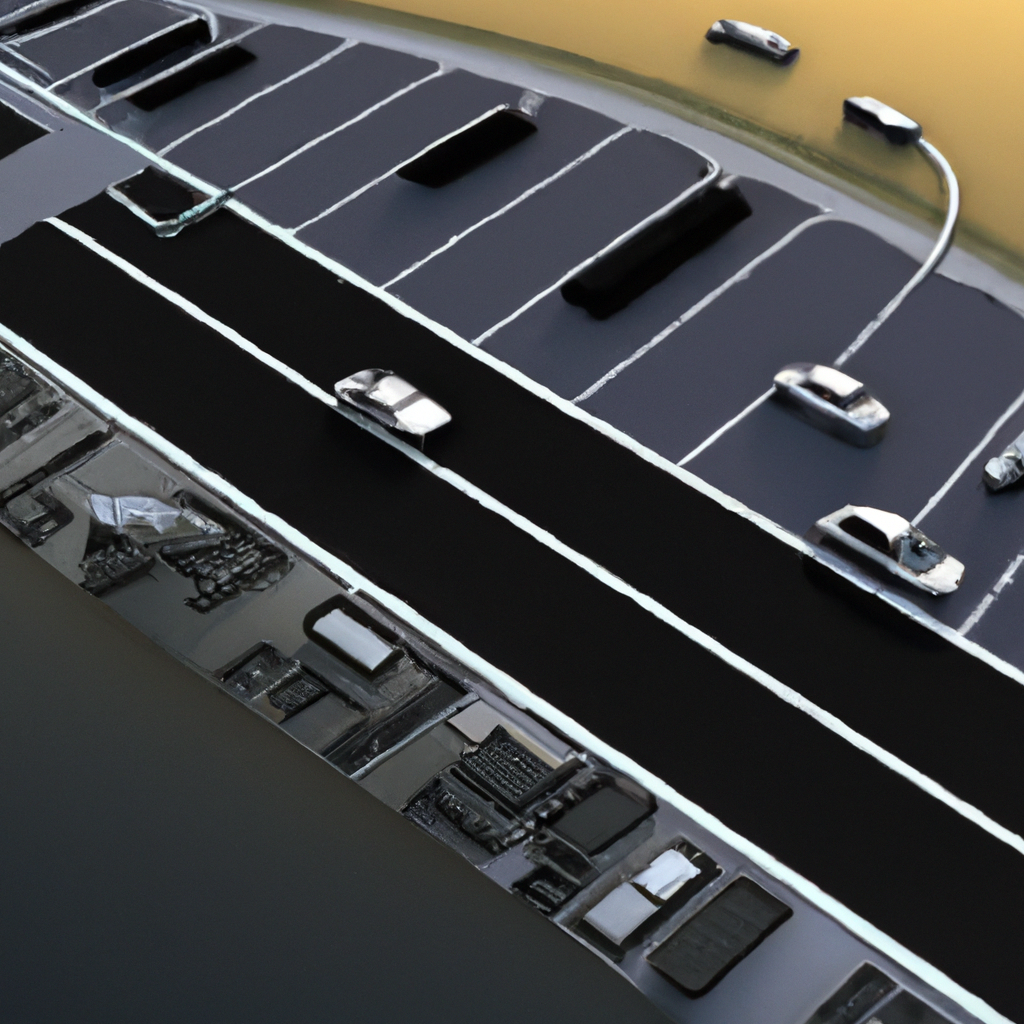At EV Nexus, your go-to resource for all things electric vehicles, we are excited to explore the future of electric vehicles and the groundbreaking technology that is transforming the way we charge and power our cars. In this article, we will be taking a closer look at Vehicle-to-Grid (V2G) technology, a revolutionary concept that allows electric vehicles to not only receive power from the grid but also feed excess energy back into the grid during peak demand. With V2G technology, EVs have the potential to become an essential component of a smart, sustainable energy ecosystem. Join us as we uncover the immense possibilities and benefits this technology has to offer.
The Future of Electric Vehicles: Vehicle-to-Grid (V2G) Technology
1. Introduction to Vehicle-to-Grid (V2G) Technology
Electric vehicles (EVs) have gained significant popularity in recent years due to their environmental benefits and reduced reliance on fossil fuels. However, the integration of EVs into the existing energy infrastructure comes with challenges related to grid stability, renewable energy integration, and charging infrastructure. Vehicle-to-Grid (V2G) technology presents a promising solution to these challenges. V2G enables bidirectional energy flow between EVs and the power grid, transforming EVs from mere modes of transportation into mobile energy storage units.
2. How Does Vehicle-to-Grid (V2G) Technology Work?
V2G technology allows EVs to not only consume energy from the grid but also provide excess energy back to the grid when needed. This is made possible through the use of bi-directional chargers, which enable EVs to discharge stored energy and supply it to the grid during peak demand periods. These chargers are equipped with smart communication systems to facilitate a seamless exchange of energy between the vehicle and the grid.

This image is property of images.pexels.com.
3. Benefits of Vehicle-to-Grid (V2G) Technology
V2G technology offers numerous benefits for both EV owners and the power grid. Firstly, it allows EV owners to generate revenue by selling excess energy back to the grid, effectively turning their EVs into a potential source of income. This can help offset the costs of EV ownership and incentivize widespread adoption.
Secondly, V2G technology contributes to grid stability by providing a distributed energy storage system. The ability to store and release energy from EVs can help balance the fluctuations in renewable energy generation and stabilize the grid during peak demand periods.
Additionally, V2G technology enhances the reliability and resilience of the power grid. In the event of a power outage or natural disaster, EVs with V2G capabilities can serve as backup power sources for homes and critical infrastructure.
4. Challenges of Implementing Vehicle-to-Grid (V2G) Technology
While V2G technology holds great potential, there are challenges that need to be addressed for its successful implementation. One of the primary challenges is the development of standardized communication protocols and grid integration frameworks. Standardization is crucial to ensure compatibility and interoperability across different EV models and charging infrastructure.
Furthermore, the implementation of V2G technology requires the installation of bi-directional chargers on a large scale. This necessitates significant investments in charging infrastructure and coordination with utility companies to support the grid integration of EVs.
Additionally, the implementation of V2G technology raises concerns about the impact on the battery life of EVs. The frequent discharge and recharge cycles associated with V2G operations may accelerate battery degradation. Therefore, effective battery management systems need to be developed to protect the longevity and performance of EV batteries.

This image is property of images.pexels.com.
5. The Role of Vehicle-to-Grid (V2G) in Renewable Energy Integration
Renewable energy sources such as solar and wind power are inherently intermittent, which creates challenges for grid operators in balancing supply and demand. V2G technology can play a vital role in the integration of renewable energy into the grid. By utilizing EVs as mobile energy storage, excess renewable energy can be stored in EV batteries during periods of high generation and discharged back to the grid during times of low supply.
This process, known as demand response, helps in optimizing the utilization of renewable energy and mitigating the need for fossil fuel-based power plants for grid stability. V2G technology enables EVs to act as a buffer, absorbing excess renewable energy when it is available and supplying it when renewable energy generation is low.
6. V2G Technology and Grid Stability
One of the significant benefits of V2G technology is its ability to enhance grid stability. Grid operators constantly face the challenge of balancing electricity supply and demand, especially during peak demand periods. V2G technology can act as a distributed energy storage system, providing flexibility and stability to the grid.
During high demand, when the grid is stressed, EVs equipped with V2G technology can supply energy back to the grid, reducing strain on the system. This helps prevent blackouts and voltage fluctuations, ensuring a reliable power supply for consumers.

This image is property of images.pexels.com.
7. V2G Technology in Home Energy Systems
V2G technology has the potential to revolutionize home energy systems by enabling EV owners to utilize their vehicles as a part of their residential power supply. When integrated with smart home energy management systems, EVs can serve as backup power sources during outages or supplement the energy needs of the household during peak demand periods.
Furthermore, V2G-enabled homes can participate in demand response programs, contributing to grid stability and earning financial incentives through energy market participation. This integration of EVs into home energy systems promotes self-sufficiency, resilience, and sustainability.
8. V2G Technology and Electric Vehicle Fleet Management
Fleet operators stand to benefit significantly from V2G technology. With large numbers of vehicles plugged into the grid simultaneously, fleet operators can leverage their EVs as a mobile energy storage fleet to participate in energy markets and earn additional revenue. This can help offset the operational costs of maintaining the fleet and increase the overall profitability of the business.
V2G technology also offers fleet operators the ability to manage their charging and energy consumption more efficiently. By optimizing the energy flows within the fleet, operators can minimize operational costs, improve fleet reliability, and reduce environmental impact.

9. The Impact of V2G Technology on the EV Charging Infrastructure
The implementation of V2G technology necessitates the integration of bi-directional chargers into the existing charging infrastructure. These chargers are essential for enabling the bidirectional flow of energy between EVs and the grid.
To support the widespread adoption of V2G technology, substantial investments in charging infrastructure are required. This includes the installation of bi-directional chargers at public charging stations, workplaces, and residential areas. Collaborations between charging infrastructure providers, automakers, and utilities are essential to ensure the availability and scalability of V2G charging infrastructure.
10. V2G Technology in Smart Grids and Demand Response Programs
The concept of smart grids revolves around the efficient and intelligent management of energy resources. V2G technology plays a crucial role in smart grid implementations by providing flexibility and responsiveness to the grid. EVs, through V2G capabilities, can respond to real-time grid signals and adjust their charging and discharging patterns accordingly.
This integration of V2G technology into smart grids enables demand response programs, where EVs can be controlled to optimize grid operations and achieve energy efficiency. By participating in grid balancing actions, EV owners can contribute to renewable energy integration, reduce the need for additional power plants, and lower electricity costs.
11. Government Support and Policy Initiatives for V2G Technology
Governments around the world are recognizing the potential of V2G technology and are implementing policies and initiatives to support its development and adoption. These include financial incentives for V2G-enabled vehicles, funding for research and development, and regulations mandating the inclusion of bidirectional charging capabilities in new EV models.
Furthermore, collaborations between governments, automakers, utilities, and research institutions are driving the advancement of V2G technology. These partnerships aim to address technical challenges, establish industry standards, and create a favorable ecosystem for V2G implementation.
12. Future Prospects and Market Forecast for Vehicle-to-Grid (V2G) Technology
The market for V2G technology is projected to witness significant growth in the coming years. As the adoption of EVs continues to rise and renewable energy integration becomes paramount, V2G technology offers a viable solution for enhancing grid stability and optimizing energy management.
With advancements in battery technology, wireless communication systems, and smart grid infrastructure, the potential of V2G technology will only increase. As the market matures and economies of scale are achieved, the cost of V2G-enabled EVs and charging infrastructure is expected to decrease, further driving the widespread adoption of this technology.
In conclusion, Vehicle-to-Grid (V2G) technology is poised to revolutionize the way we think about electric vehicles and their role in the energy ecosystem. By enabling bidirectional energy flow, V2G enhances grid stability, promotes renewable energy integration, and offers numerous benefits for EV owners, fleet operators, and the power grid alike. With government support, technological advancements, and the increasing demand for sustainable transportation solutions, the future of V2G technology looks bright.

